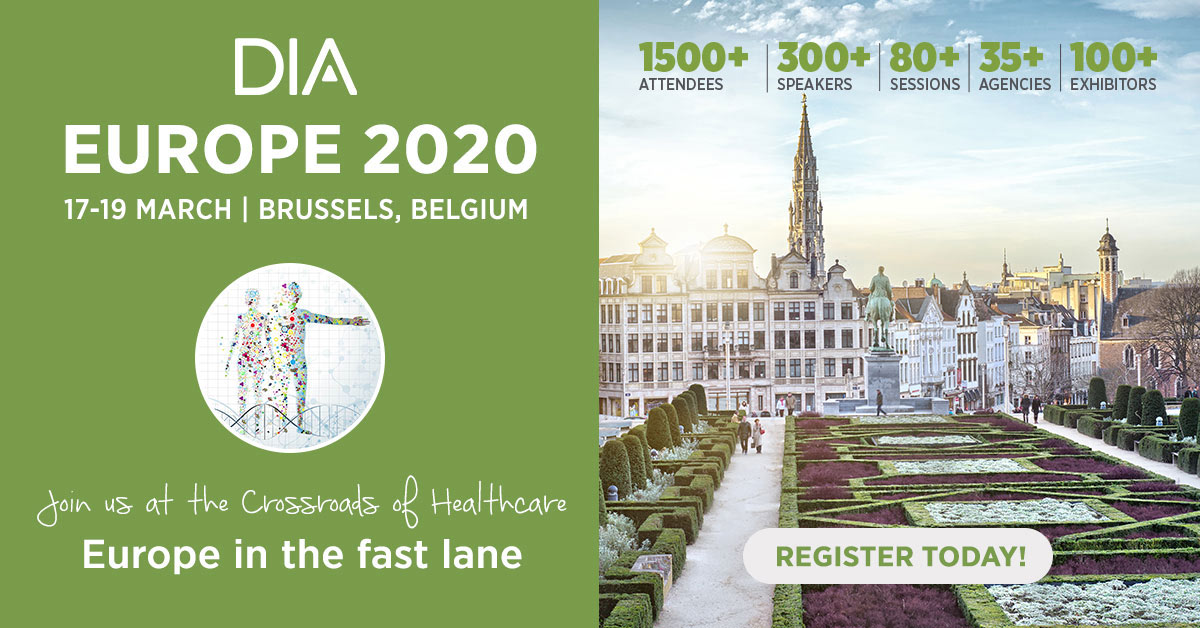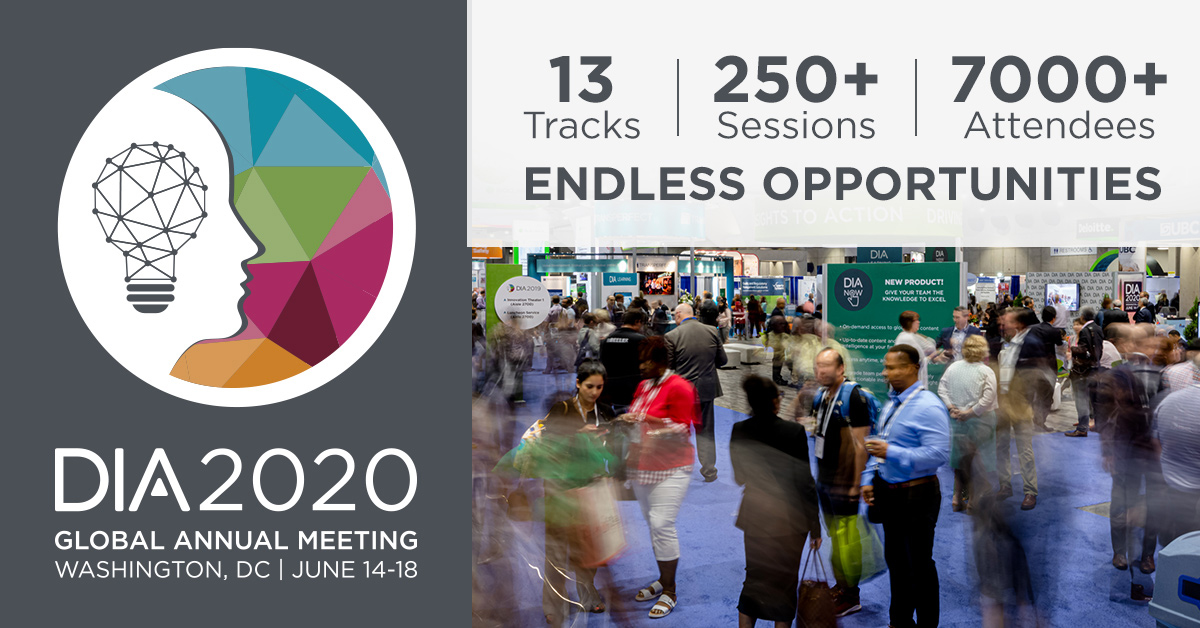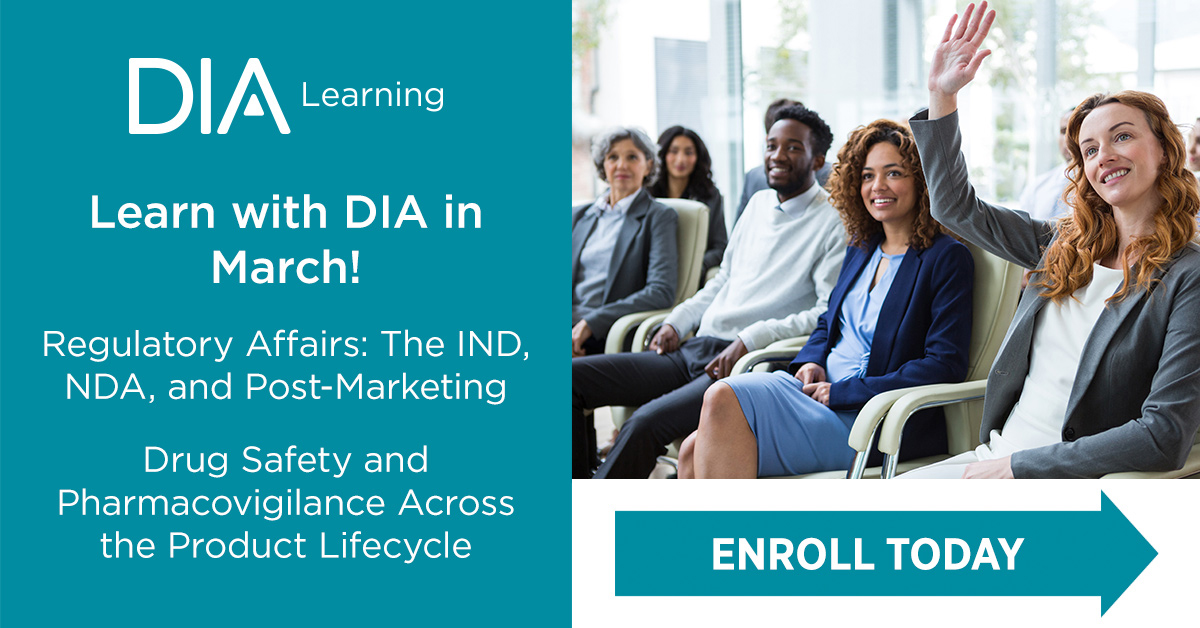December 2019 Global Forum
Table of Contents
DIA ANNUAL CANADIAN MEETING 2019
COMMUNITY SPOTLIGHT
EXECUTIVE LEADERSHIP
Subscribe
Love Global Forum‘s new online format? Subscribe today and never miss an issue.
Executive Leadership

Alberto Grignolo, PhD
Global Forum
Editor-in-Chief
Fellow of DIA
ike airline passengers, patients who choose to enroll in a clinical trial place their trust in the Principal Investigator (“the captain”), expect to be treated with respect and consideration for their needs by site staff (“cabin attendants”), hope to have a positive experience (“on-time flight to their destination”), and look forward to a certain measure of convenience (“seats, meals, cabin temperature, facilities”).
As a result, many patients who could take part in clinical trials choose to not do so, citing personal inconvenience and conflicting personal, professional, and family priorities. Since industry’s ability to conduct clinical trials depends on patients’ willingness to participate in their conduct, reluctance to do so can have a chilling effect on the development of new medicines.
Editorial Board
Content stream editors
Gary Kelloff US National Institutes of Health
David Parkinson ESSA Pharma, Inc.
regulatory science
Yoshiaki Uyama Pharmaceuticals and Medical Devices Agency (PMDA)
Adora Ndu BioMarin Pharmaceutical, Inc.
Patient engagement
Deborah Collyar Patient Advocates In Research (PAIR)
Lode Dewulf Servier
Editorial Staff
Alberto Grignolo, Editor-in-Chief Parexel International
Ranjini Prithviraj, Global Associate Director, Content Collaboration DIA Publications
Sandra Blumenrath, Science Writer DIA Publications
Chris M. Slawecki, Senior Digital Copyeditor DIA Publications
Regional Editors
AFRICA
David Mukanga Bill and Melinda Gates Foundation
ASEAN
Silke Vogel Duke-National University of Singapore Medical School
AUSTRALIA/NEW ZEALAND
Richard Day University of New South Wales, Medicine, St. Vincent’s Hospital
CANADA
Judith Glennie JL Glennie Consulting, Inc.
Megan Bettle Health Canada
CHINA
Ling Su Shenyang Pharmaceutical University, Lilly Asia Ventures
Europe
Thomas Kühler Sanofi R&D
INDIA
J. Vijay Venkatraman Oviya MedSafe
JAPAN
Kazuhiro Kanmuri Inter-Professional, Inc.
MIDDLE EAST
Inas Chehimi Novartis
USA
Ebony Dashiell-Aje FDA
Young Professionals Editor
DIA Membership
Bringing together stakeholders for the betterment of global health care.
Time to Assess the Value of External Control Arms in the Development of Cancer Therapies
Columbia University Medical Center and James J Peters VA Medical Center
Columbia University Medical Center and James J Peters VA Medical Center
National Science Foundation and Johns Hopkins University
Columbia University Medical Center and James J Peters VA Medical Center
ovel approaches to cancer drug development are urgently needed to successfully address the challenges of clinical trial enrollment, rising drug development costs, and persistently high failure rates of randomized clinical trials. While external control arms based on prior or historical data could offer a solution, adopting conventional clinical trial control arms as a standard can be difficult. Using a novel set of equations that define the growth and regression rates of tumors, we have demonstrated that the rate of tumor growth is a reliable biomarker of overall survival. Here, we propose an innovative application of this analysis method alongside an external control for more successful and rapid drug development.
Key Takeaways
- Regulatory agencies are open to consider novel methods of assessing drug efficacy.
- Tumors grow and regress exponentially, and the two components can be mathematically deconvoluted.
- The rate of tumor growth (g) determined while a therapy is administered is an excellent biomarker of overall survival.
- For purposes of the external control arms, the estimated rates of g are the data output that anchor the analyses.
- Data generated with an experimental therapy can be benchmarked against an external control with as few as twenty patients to inform drug development.
- Provision of clinical trial data should be a moral imperative and made broadly available in public warehouses such as Project Data Sphere.
- External control arms are ideas that, when validated, stand to benefit all stakeholders. The time has come to test these concepts.
Adapting to The Next Horizon of Innovation in Drug Discovery
e’re in a new era when the pharmaceutical industry is adopting various innovations to enhance patient centricity, increase efficiency, reduce the cost of drug development, and swiftly bring new medicinal products with high value propositions to markets. The length of time to identify and successfully bring molecules to market is affected by complex global regulatory frameworks, increasing costs, and price control mechanisms.
These are challenges to innovation. But there are lessons to be learned from other innovative industries.
![]() Podcasts
Podcasts
Proceedings: DIA Annual Canadian Meeting 2019
Proceedings from DIA Annual Canadian Meeting 2019
Proceedings: DIA Annual Canadian Meeting 2019

Canada’s Shared Vision for Collaborative Healthcare Innovation Agile Regulations and Patient Engagement Will Help Lead Growth
Lisa Chartrand
Hoffman La-Roche
elivered to more than 110 attendees who came from various public and private sectors, the topics of the DIA Canadian Annual Meeting 2019 keynote address were both timely and relevant, even in the election transition period that Canadians are currently in.
In Budget 2017, the Government announced a new vision for Canada to become a global leader in innovation. Sector-specific roadmaps were developed to help support this innovation and the opportunities that innovation presents for growth. Jennifer Chan (Merck Canada, Inc.) shared her experiences from participating in the strategic Health and Biosciences Table, including identifying barriers to not only healthcare sector growth but also barriers to the vision of what Canada could become. One of the proposed solutions was to design Agile Regulations.
Proceedings: DIA Annual Canadian Meeting 2019

Regulatory Modernization in Health and Biosciences
he Canadian Annual Meeting Keynote on the Canadian government’s economic strategy table jointly delivered by Jennifer Chan (Merck Canada, Inc.), David Lee (Health Canada), Scott Smith (Canadian Chamber of Commerce), and chaired by Kristin Willemsen (Consumer Health Products Canada) led into a focused discussion of Regulatory Modernization in the Health and Biosciences Sector.
Key Takeaways
- Health context is evolving with more tailored medicines, advancements in cell therapies, and new incorporations of technology into health therapies.
- Health Canada heard from stakeholders that greater regulatory flexibility and risk-based approaches are needed to reduce barriers to innovation.
- Commitments were made in the Health and Biosciences Regulatory Review Roadmap and in the 2019 Federal Budget to address barriers through regulatory modernization in key areas.
- The dual objectives of these regulatory modernization efforts are to stimulate and provide better access to safe products for Canadians.
Proceedings: DIA Annual Canadian Meeting 2019

Patient Experience: What Is It, Where Is It Now, And Where Is It Going?
his year, the Canadian Annual Meeting featured its first plenary session on patient involvement. Panelists were given the challenge of providing context to this evolving field and responded with examples of current patient involvement initiatives, collaborative partnerships, and other resources that support patient involvement and encourage best practices.
Key Takeaways
- Patients have applied, lived experiences and are uniquely positioned to enrich traditional drug development and regulatory processes with this knowledge.
- Patient involvement needs to be meaningful and established in partnership.
- Patient involvement in the drug lifecycle is relatively new and evolving.
- Early patient engagement provides an opportunity to inform decisions throughout the drug lifecycle and to establish meaningful patient outcomes.
- There is a need for guidance, engagement platforms, and tools to foster patient involvement across the broader drug sector.
Proceedings: DIA Annual Canadian Meeting 2019

Supporting Innovation AND Safety
igital health is a term for a broad range of health technologies that includes mobile apps, wearable gadgets, and even artificial intelligence. These technologies have the potential to make the delivery of healthcare more accessible, convenient, and cost-effective. Software as a Medical Device (SaMD), a type of digital health technology, is standalone software that can aid a clinician in making decisions, provide treatment options for a condition, or even provide early diagnosis of life-threatening diseases.
While SaMD has the potential to offer tremendous benefits to the healthcare system, the International Medical Device Regulators Forum (IMDRF), a group of medical device regulators working towards the goal of international regulatory harmonization, has recognized that SaMD presents new challenges to the regulation of medical devices. Many non-traditional medical device manufacturers such as software developers of SaMD have found themselves in unfamiliar medical device regulatory territory. On the other hand, regulators are faced with the challenges of regulating software that can have frequent updates, potentially changing safety and/or effectiveness of the software. The ability to download software over the internet also poses risks as the traditional physical boundaries of containment are no more.
Proceedings: DIA Annual Canadian Meeting 2019

Anvisa Working Toward New Regulatory Framework for Innovative Synthetic and Semi-Synthetic Drugs in Brazil
Nathalia Cangussu Ferraz
Brazilian Health Regulatory Agency (Anvisa)
he Brazilian Health Regulatory Agency (Anvisa) is a relatively young regulatory agency but with a large scope which encompasses drugs, pesticides, foods, cosmetics, health products, sanitizers, blood, tissues, cells and organs, and tobacco, and a large population (currently estimated at more than 210 million people) to serve.
Since first created in 1999, the regulation defining requirements for registration and marketing of medicines in Brazil has undergone important changes. The Coordination of Innovations, part of the General Office of Drugs, is currently working on an innovative proposal to change Resolução da Diretoria Colegiada (RDC) nº 200/2017 which sets out criteria for granting and renewing registration of drugs with synthetic and semi-synthetic active ingredients in Brazil.
Around the Globe
rom September 30 through October 4, the African Union Development Agency (AUDA-NEPAD) and the World Health Organization (WHO), with support from multiple partners, organized a gathering in Victoria Falls, Zimbabwe. The week started with a scientific conference at which regulators, academics, industry, and African and global partners discussed the progress and lessons learned from implementation of regulatory harmonization in Africa, followed by a regulators-only meeting.
![]() Podcasts
Podcasts
Around the Globe
n December 2018, FDA published a Framework for its real world evidence (RWE) program. As articulated in the Framework, three central considerations will drive FDA’s evaluation of RWE: whether the real world data (RWD) are fit for use; whether the trial or study design used to generate RWE can provide adequate scientific evidence to answer or help answer the regulatory question; and whether the study conduct meets FDA regulatory requirements. To inform this evaluation, FDA is engaging external and internal stakeholders, funding demonstration projects, and developing guidance for industry.
What is the RWE Program?
Community Spotlight
What’s In a Name? DIA Statistics Community and DIA Women in Life Sciences Community Are Changing Names!
DIA Statistics and Data Science Community Chair
DIA Diversity and Inclusion Community Chair
ith this announcement and an explanation of the rationale that spurred these name changes we hope to create awareness and attract individuals who are interested in fostering innovation and thought leadership in data science or who wish to lend their expertise to moving toward greater diversity in all things healthcare.










